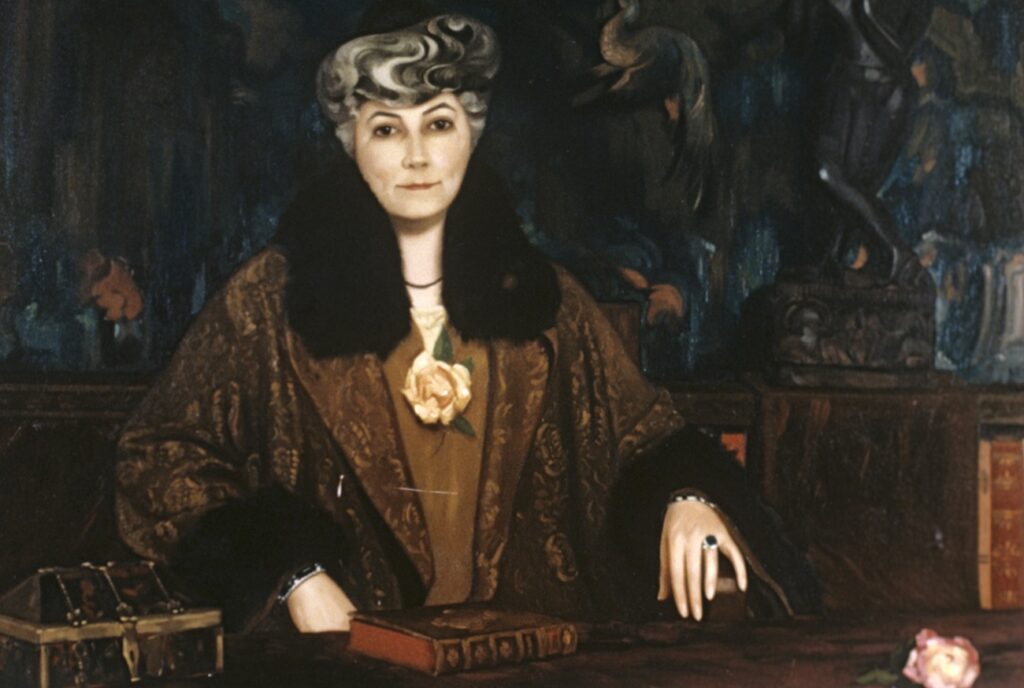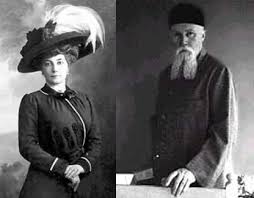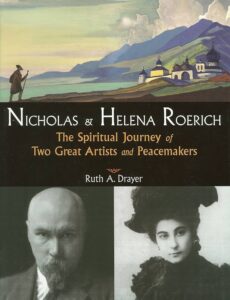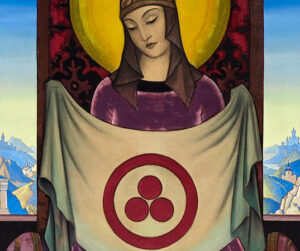Helena Roerich: Friend, Wife, Inspiration To The World’s Greatest Artist
Oct 8, 2025 | Shalini Rai
Helena Ivanovna Roerich was a Russian theosophist, writer, and public figure. She and her husband Nicholas Roerich were the principal articulators of the Agni Yoga neo-theosophical teachings. Helena was born in St Petersburg, Russia on February 12, 1879 and died in Kalimpong, West Bengal on October 5, 1955. This year - 2025 - marks the 70th anniversary of her death
Nicholas Roerich is a familiar figure to art lovers around the world. Many Indians get their first introduction to this great Russian artist on their visit to the hills of Himachal Pradesh, where his paintings and legacy is preserved in his estate at Naggar town near Manali, the famous hill resort. The illustrious Russian painter, writer and thinker who made Naggar his home and the world his oyster remains well-known over 77 years after his demise.
In Naggar, as tourists peer at the artefacts at the Roerich Museum, they are given to wonder how this maverick intellectual arrived in the Himalayas and worked towards lasting, universal acclaim.
However, crediting Roerich for his contribution to the arts and ignoring his wife Helena’s role in it is like learning to paint a garden but only in hues of black and white.
Helena Roerich remains an intriguing figure despite being the driving force and inspiration behind this architect of the historic Roerich Pact of 1935.
‘Muse to an extraordinary soul’
An unusually gifted woman, Helena was the author of several books, including The Foundations of Buddhism and a Russian translation of Madame H.P. Blavatsky’s Secret Doctrine. She was the daughter of renowned architect Shaposhnikov and niece of the acclaimed composer Mussorgsky.

In Roerich’s own words, this is how he viewed his life-long companion, “…On such a long voyage, meeting many storms and dangers… together we overcame all obstacles. And obstacles turned into possibilities. I dedicated my books to Helena, my wife, friend, travelling companion, inspirer! Each of these concepts was tested in the fire of life. And in Petersburg, Scandinavia, England, America, and in all Asia we worked, we studied, we broadened our consciousness. Together we created, and not without reason is it said that the work should bear two names – a feminine and a masculine.”
Their romance blossomed in the late 1890s and it’s said that when these two met, there was an immediate mutual attraction. Engaged to be married, Nicholas and Helena Roerich founded the Agni Yoga Society in New York, espousing a living ethic that encompassed ancient philosophies. Even as the Roerich family expanded in 1902 (with the arrival of their first son George), Helena and Nicholas set off on an extended tour of 40 cities in Russia, in the summer of 1903.
Iconoclast extraordinaire
An iconoclast in many ways, Helena was the original feminist, who espoused and practiced gender equality without resorting to hypocritical, sanctimonious displays of women’s liberation.

Whether it was Roerich’s forays into the arts or charting of treacherous terrain, Helena was right beside him, undeterred by either the unaccepted or the unexplored.
In 1937, Helena Roerich wrote to a friend, “…woman should realise that she herself contains all forces, and the moment she shakes off the age-old hypnosis of her seemingly lawful subjugation and mental inferiority and occupies herself with a manifold education, she will create in collaboration with man a new and better world… Cosmos affirms the greatness of woman’s creative principle. Woman is a personification of nature, and it is nature that teaches man, not man nature. Therefore, may all women realise the grandeur of their origin, and may they strive for knowledge.” (Letters of Helena Roerich, 1935-1939, Vol. II)
The master artist duly credited Helena in his works and featured many subjects modelled on her in his paintings like Karelia – Eternal Expectation, The Waiting Woman, She Who Leads, Madonna Laboris and The Mother of the World.
The Roerich Pact
In 1928, when the Roerichs settled in Naggar, they set up the Urusvati Himalayan Research Institute and embarked upon a period of prolific creativity and growing global influence.

Amid all this, Helena remained the pivot around which revolved Nicholas Roerich’s artistic and intellectual exertions. In 1929, Roerich proposed signing a treaty – the Roerich Pact – for the protection of cultural treasures during times of both war and peace.
The most important idea of the Roerich Pact is the legal recognition that the defense of cultural objects is more important than the use or destruction of that culture for military purposes, and the protection of culture always has precedence over any military necessity.
He also designed a flag called the Banner of Peace, with three spheres surrounded by a circle, the image of the Strasbourg Madonna adorned with it. This motif – inspired yet again by Helena – can be seen in many of Roerich’s paintings, most notably Madonna Oriflamma, in which a ‘woman’ is the carrier and defender of the Banner.
Helena’s life is emblematic of the central role she played in influencing one of the most notable figures of the 20th century. She was not just a life partner to Nicholas Roerich, she was his muse and his inspiration; to be so to the great Roerich hints at the extraordinary personality Helena must have possessed, one that continues to inspire and inform.
